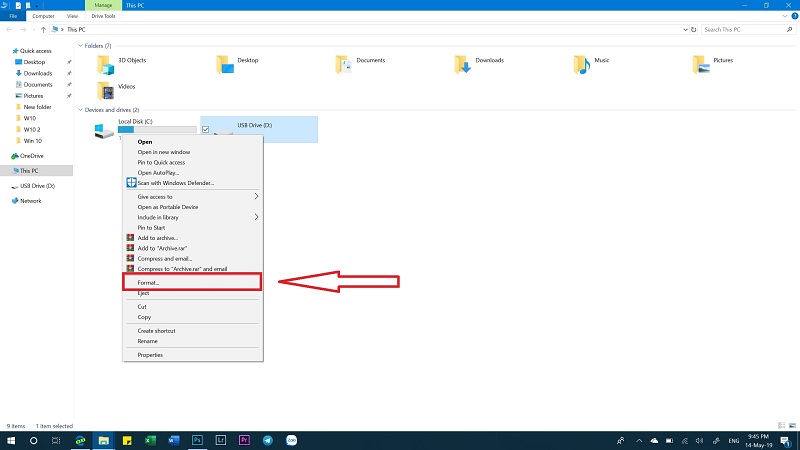

- #Usb drive format ntfs allocation unit size how to
- #Usb drive format ntfs allocation unit size windows 10
If you want to format your drive to FAT32 or exFAT, then simply replace NTFS with either of the two file formats in the command, and change the name of the drive.Now it’s time to format your USB drive, for that enter format fs ntfs label “insert name of drive here” quick command.Then type create partition primary and active-this will create and activate the specified partition.It will display a success message on the screen.Once you selected the disk, type clean command.Then enter select disk following by its disk number, for example, select disk 2.Using select command locate or choose your USB drive.Then type list disk to see active drives on your machine.When the command prompt is opened, type diskpart and hit enter.In the start menu or Run tab just enter Then right click the command prompt icon and select Run as Administrator.Method 2: Format USB Drive using Command Prompt What if your USB flash drive is larger than 32 GB? In that case, you can format it using CMD command line.
#Usb drive format ntfs allocation unit size windows 10
In reality Windows 10 Disk Management tool only supports to format USB drive which is smaller than 32GB to FAT32.
#Usb drive format ntfs allocation unit size how to
Note: If you have formatted the drive without maintaining a backup of important files then follow this link to know how to recover data from formatted USB drive easily and effectively. To proceed with the formatting, make your selection, click Start followed by OK to confirm the formatting process.You can even Restore device defaults in case if your custom settings aren’t working. You can customize the formatting options that are: File system, Allocation unit size, volume label and format options.Right click on it and select Format option.Know how to do it by following the below steps: The simplest way available to format your USB drive is by using file explorer. Method 1: Format USB drive using File Explorer Windows 10 offers three file system options while formatting a USB drive: FAT32, exFAT, and NTFS. This article provides some ways to format a USB drive on Windows 10 computer.

The reasons can be to increase drive speed, compatibility etc. Due to various reasons, users will format a USB flash drive in Windows 10.


 0 kommentar(er)
0 kommentar(er)
